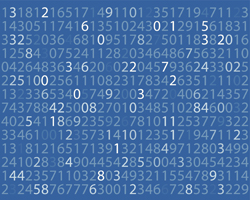Deciphering the path to unbreakable ciphers
The cryptosystems produced via cryptography are essential to the security of contemporary computer systems. A cryptosystem typically consists of three algorithms: one for key generation, one for encryption and one for decryption. To make cryptosystems even harder to crack, the 'High performance lattice cryptography' (HIPERLATCRYP) project is developing powerful and provably secure public-key cryptosystems based on the hardness of high-dimensional Euclidean lattices. Financed by the EU, the project is focusing on this avenue because the best-known Euclidean lattice problems are believed able to withstand cryptanalytic attacks based on future quantum computers. This kind of encryption has applications in telecommunications, e-commerce and other critical areas. Given their algorithmic simplicity, lattices are also ideal in devices with limited computational power, such as smart cards. HIPERLATCRYP has been working on 'expressive' cryptographic algorithms that support convenient naming schemes for the handling of large populations of cryptographic actors. To date, the project has collaborated with teams from France and the United States to develop attribute-based encryption and multiuser anonymous digital signatures, respectively. The project will end in the autumn of 2014 and its results should provide the theoretical foundations for next-generation encryption using lattice cryptography.







